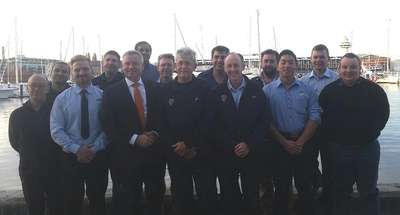Carp Workshop 2017

The Carp Management Program (the Program) held its yearly workshop on 10 May. We looked over the past year's work and started planning for the coming year.
Dr. Sean Tracey, a Senior Research Fellow from the Institute for Marine and Antarctic Studies, provided an independent review of the workshop and helped develop the plan for the coming year.
Minister for Primary Industries and Water, Jeremy Rockliff, came to the workshop and was given an update. The Minister is supportive of the Program and noted the success of the Program this season. His words of encouragement were appreciated by the team.
The day involved presentations from staff on all aspects of work done in the last year. This gave everyone an understanding of how the Program is progressing, the findings for the season, what we did well, what can be improved and the plan for the coming season.
Key findings from the workshop were:
- No carp were detected in Lake Crescent or downstream in the Clyde River.
- Carp remain contained to Lake Sorell.
- No spawning or small carp were found in Lake Sorell.
- We fished hard in 2016-17, as we have in previous years, and caught around half as many carp as last year. This suggests the population has fallen greatly.
- Studies of the “jelly gonad” disease which causes sterility is now affecting 50% of the male carp.
- Over 41 330 carp have been removed from Lake Sorell since 1995.
- Less than 1% of the original population remain.
The plan for the coming year:
- Jelly gonad diseased carp will be used as transmitter fish over the 2017-18 season to assist in spawning prevention.
- Be prepared for spawning conditions in spring 2017 (i.e. rising water levels combined with warm settled weather in spring).
- If the conditions are right carp will push inshore to marsh areas. This makes them easier to catch in nets and traps and we could catch most of the carp left in the lake.